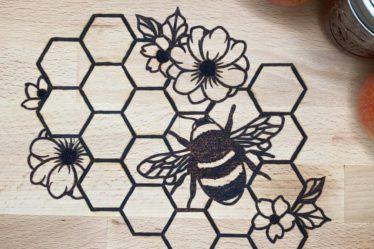
As a small business you often have a vision. You want to create the things that you love and you want your customers to love them as much as you do. Honestly, I would love to just make the things I want to every day. In reality, though, this isn’t always how it is going to work out. I have had to pivot my business several times to accommodate the people who really matter. The customers.
Finding the product that sells
As much as I love my floral patterns and my mandalas, that isn’t always the products that sell. Some of my biggest sellers are pop-culture inspired pieces based on board games, books, movies, television shows, and the like. I couldn’t tell you how many coasters I created for the board game Carcassone. When Brian asked me, however, if I wanted to take it off the shop my answer was a resounding “No! Why would I want to remove my best selling product!”. We don’t always get to make the things we want to make but, rather we make the things that folks want us to make.
The custom conundrum
Let’s face it: custom orders are not always fun. It is much more enjoyable to make pieces that are purely your own vision. When I am doing a market, however, people will often look around at the products I have on display and love them but, then that light bulb moments happens, and they ask me “but could you do this?” and a custom order is born. So, with that, I am no working with them on creating their vision. Personally, I enjoy this, but not everyone does because it means you may have to compromise your own artistic choices. In my case, though, it would also mean turning away anywhere between 25 – 50% of my income. So, instead of turning them away, I embrace them. I look for ways to create their vision but, also, to incorporate in my own design desicisions so that it remains uniquely me.
Expanding your range
Last year I wanted to pivot my business to more fine art. I wanted to make sure I was able to charge prices that allowed me to pay myself what I was worth. I encourage you all to do this, but, at the same time you still need to make sales and not everyone has hundreds or, possibly thousands, of dollars to spend on art. To solve this I tried to diversify the products I sell. The focal point of my website and my booth is my high-end pieces. These are the ones that are going to draw people in. Then I have my mid-range pieces. These are the smaller, less detailed pieces, that I can create much more quickly and sell at a lower price point (think $25-100).
The third category is my small pieces. These are earrings, bookmarks, and other smaller items. These pieces are nice because I can sell them for $20 or less, I can offer discounts when people buy two or more, and they allow me to offer my hand-crafted art but without the fine art prices. The final category are the impulse items. Keyrings, magnets, pop-sockets, and other low-cost products that can be priced below $5. I keep these up near where we check people out so that they might just add one in for a few extra bucks. These also make great options for kids coming through looking for cost-conscience gifts for their parents.
Have you had to pivot your business to adapt to customers. What are some of the things you did to make sure you were able to meet the needs of your customers while staying true to your goals? Share your stories with us @bz_furfur and, as always, stay unique.



